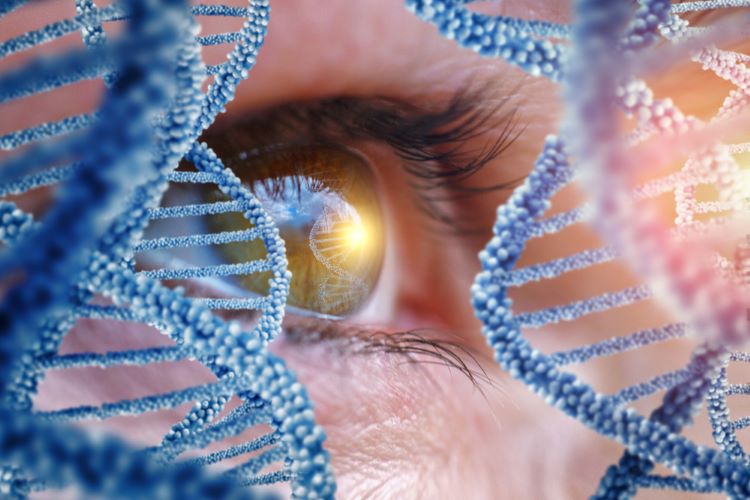Modifier gene therapy – clinical development and manufacturing considerations
Posted: 13 June 2024 | Arun Upadhyay (Ocugen) | No comments yet
Expanding on his earlier podcast discussion with EPR, Dr Arun Upadhyay, Chief Scientific Officer and Head of Research & Development at Ocugen, discusses the company’s promising modifier gene therapy candidates for ophthalmic disorders.


Tell us about Ocugen’s lead programme, OCU400. What’s the latest and what’s next?
OCU400 is a modifier gene therapy aimed at treating retinitis pigmentosa and Leber congenital amaurosis (LCA).
In April 2024, Ocugen received US Food and Drug Administration (FDA) clearance to initiate the Phase III liMeliGhT clinical trial for OCU400 for retinitis pigmentosa. Shortly thereafter, the European Medicines Agency (EMA) reviewed the study design, endpoints, and planned statistical analysis, and deemed the US-based trial acceptable for a Marketing Authorisation Application (MAA). In December 2023, the FDA granted OCU400 Regenerative Medicine Advanced Therapy (RMAT) designation.
The Phase III study will include 150 participants—75 with the RHO gene mutation and 75 that are gene-agnostic. In each arm, participants will be randomised 2:1 to the treatment group (2.5 x 1010 vg/eye of OCU400) and the untreated control group.
Ocugen plans to expand the OCU400 clinical trial in the second half of 2024 to include patients with LCA, contingent on favourable results from the Phase I/II study and alignment with regulatory agencies.
If approved, how would the treatment options and outcomes change for people with these diseases?
Unlike conventional methods…modifier gene therapy…emphasises the importance of the broader biological system, potentially leading to more effective treatments.”
The gene-agnostic mechanism of action for OCU400 provides hope for a larger retinitis pigmentosa patient population and demonstrates the potential to expand the range of indications for which modifier gene therapy could apply.
Unlike conventional methods that typically focus on replacing a mutated gene with a functional copy, modifier gene therapy modifies gene expression using master gene regulators. These master regulators work in a “gene-agnostic” way and open the possibility for the treatment of diseases caused by different gene mutations.
Modifier gene therapy triggers “epigenetic” mechanisms to restore homeostasis in the cellular environment and thereby structural and functional improvement in affected cells.
This pragmatic approach emphasises the importance of the broader biological system, potentially leading to more effective treatments.
Tell us about the other therapeutics in Ocugen’s pipeline
OCU410 is a modifier gene therapy for the treatment of geographic atrophy, an advanced stage of dry age-related macular degeneration (dAMD). It utilises an adeno-associated virus (AAV) delivery platform for the retinal delivery of the RAR-related orphan receptor A (RORA).
The RORA protein plays a crucial role in stress and metabolism, reducing lipofuscin deposits and oxidative stress, and demonstrates anti-inflammatory properties as well as inhibiting the complement system in in vitro and in vivo studies.
Ocugen is currently enrolling patients in the Phase I/II ArMaDa clinical trial to assess the safety and efficacy of OCU410 for GA secondary to dAMD.
The ArMaDa clinical trial will assess the safety and efficacy of unilateral subretinal administration of OCU410 in subjects with GA and will be conducted in two phases.
OCU410ST is a modifier gene therapy utilising an AAV delivery platform (AAV5) for the retinal delivery of the RORA gene for treating the genetic eye disorder Stargardt disease.
The GARDian clinical trial will assess the safety and efficacy of unilateral subretinal administration of OCU410ST in participants and will be conducted in two phases.
In May 2024, Ocugen announced the second cohort (medium dose) completed dosing in the dose-escalation phase. To date, six patients with Stargardt disease have been dosed in the Phase I/II clinical trial. An additional three patients will be dosed with the high dose (cohort 3) in the dose-escalation phase.
What are the top three challenges associated with gene therapy manufacturing?
Manufacturing of AAV vectors for gene therapy presents several significant challenges, such as:
- Scalability: AAV production often involves complex biological processes that are difficult to scale without compromising quality and yield. However, this challenge has limited impact for diseases in the ophthalmic space where product requirement is three to four log lower than other systemic diseases.
- Safety: ensuring the safety of AAV vectors is of paramount importance, specifically where product is delivered locally, such as subretinal delivery. Contamination with product-related impurities, empty virus particles, host cell proteins, host cell DNAs and other process related impurities may significantly impact product safety and efficacy. Additionally, any potential for integration into the host genome or immune responses must be carefully evaluated and mitigated through control strategies.
- Regulatory compliance: meeting regulatory requirements for gene therapy manufacturing adds another layer of complexity. In addition, tech transfer of manufacturing process and testing methods carry significant challenges and risks. Addressing these challenges requires interdisciplinary collaboration to develop innovative technologies and manufacturing strategies that can meet the growing demand for gene therapy products.
How are new technologies speeding up impacting gene therapy manufacturing?
By leveraging new technologies, [gene therapy] manufacturers can overcome existing challenges, streamline production workflows, and accelerate the development and commercialisation”
There has been advancement in many areas related to gene therapy manufacturing, which has played a crucial role in accelerating gene therapy manufacturing by improving efficiency across the production process. By leveraging new technologies, manufacturers can overcome existing challenges, streamline production workflows, and accelerate the development and commercialisation.
Some of these improvements include:
- Advanced cell line engineering techniques: this includes CRISPR/Cas9-mediated genome editing, enabling the development of stable cell lines optimised for AAV production. These engineered cell lines can exhibit higher productivity and more consistent performance, reducing the variability in production yields. Technologies like high-throughput screening and automated bioreactors allow for rapid optimisation of production processes. By systematically testing various culture conditions, media formulations, and process parameters, manufacturers can identify optimal conditions for maximising AAV yield and quality in a fraction of the time compared to traditional methods.
- Advances in molecular biology and synthetic biology: these developments enable the design and engineering of AAV vectors with improved transduction efficiency, tissue specificity, and immune evasion. These engineered vectors can enhance the therapeutic potency of gene therapies while reducing the required dose, which can simplify manufacturing and lower costs.
- Modular and flexible manufacturing platforms: microfluidics-based systems, modular bioreactors and similar, enable agile and customisable production workflows. These platforms can be rapidly deployed and reconfigured to accommodate different production scales, product formats, and therapeutic targets, facilitating faster development and commercialisation of gene therapies.
About the interviewee


Related topics
Biopharmaceuticals, Clinical Development, Clinical Trials, Data Analysis, DNA, Drug Development, Drug Safety, Gene therapy, Industry Insight, Research & Development (R&D), Technology, Therapeutics
Related organisations
Related drugs
Related diseases & conditions
age-related macular degeneration (AMD), Genetic disorders, Leber Congenital Amaurosis, Retinitis Pigmentosa (RP), Stargardt disease









